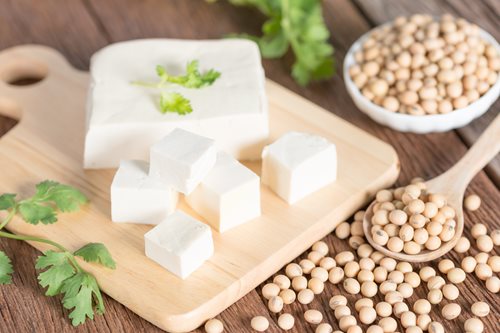Trend of high protein diets has conquered the world. Our body simply cannot work properly without getting enough of protein. Why do we need it and how to make sure there is sufficient amount of protein in your diet?
Proteins play many critical roles in the body. They do most of the work in cells and are required for the structure, function, and regulation of the body’s tissues and organs. Their dietary intake is therefore absolutely essential. Proteins belong to the group of so-called macronutrients, as well as fats and sugars. The advantage of protein is also that it dampens the rise in blood sugar level. In practice it means that it keeps you feeling satisfied for a longer period of time after eating a meal.

The sources of protein are both plant and animal. It is ideal to combine both sources, approximately in the same ratio, because animal and plant sources are complementary to one another and their biological value for the body is higher when combined. Animal protein sources include meat, fish, seafood, eggs, milk and dairy products (namely curd and yoghurt are rich in protein). In the plant based proteins we include soybean and soy products such as tofu and tempeh, pulses (lentils, beans, chickpeas, edamame), sprouts, nuts (especially almonds, cashews and pistachios), seeds (sunflower, pumpkin, sesame and poppy seeds) mushrooms, quinoa, meat substitutes such as seitan, plant based milks, freshwater algae such as spirulina and chlorella and some types of vegetables such as green peas, broccoli or spinach. Not only vegetarians and vegans can also pump up their protein intake with protein powders that can be added into porridge, yoghurt or shakes. For example hemp seeds are rich in protein, and when you add hemp protein powder into your smoothie, you’ll get a nutritious protein-rich snack. Be aware to choose only products from natural sources and in the highest - organic and raw – quality though.

Tempeh
The minimum daily protein intake is considered to be 0.6 g per 1 kg of body weight, with an optimal intake ranging between 0.8 to 1 g per kg body weight. A simple rule to help you get enough protein into the diet is to consume protein at every meal. For easier protein absorption, you’d rather consume only one type of protein in one meal. At the same time, alternate sources and use a different source of protein for the other meal of the day and yet another for the third meal of the day. For example, if you have a dairy product for breakfast, at lunch you should opt for meat, fish, legumes or eggs, and at dinner you would go for tofu, tempeh, sprouts or seeds. Always think variety and consume loads of vegetables along with your protein. In particular green and dark leafy vegetables will always do well for your body.